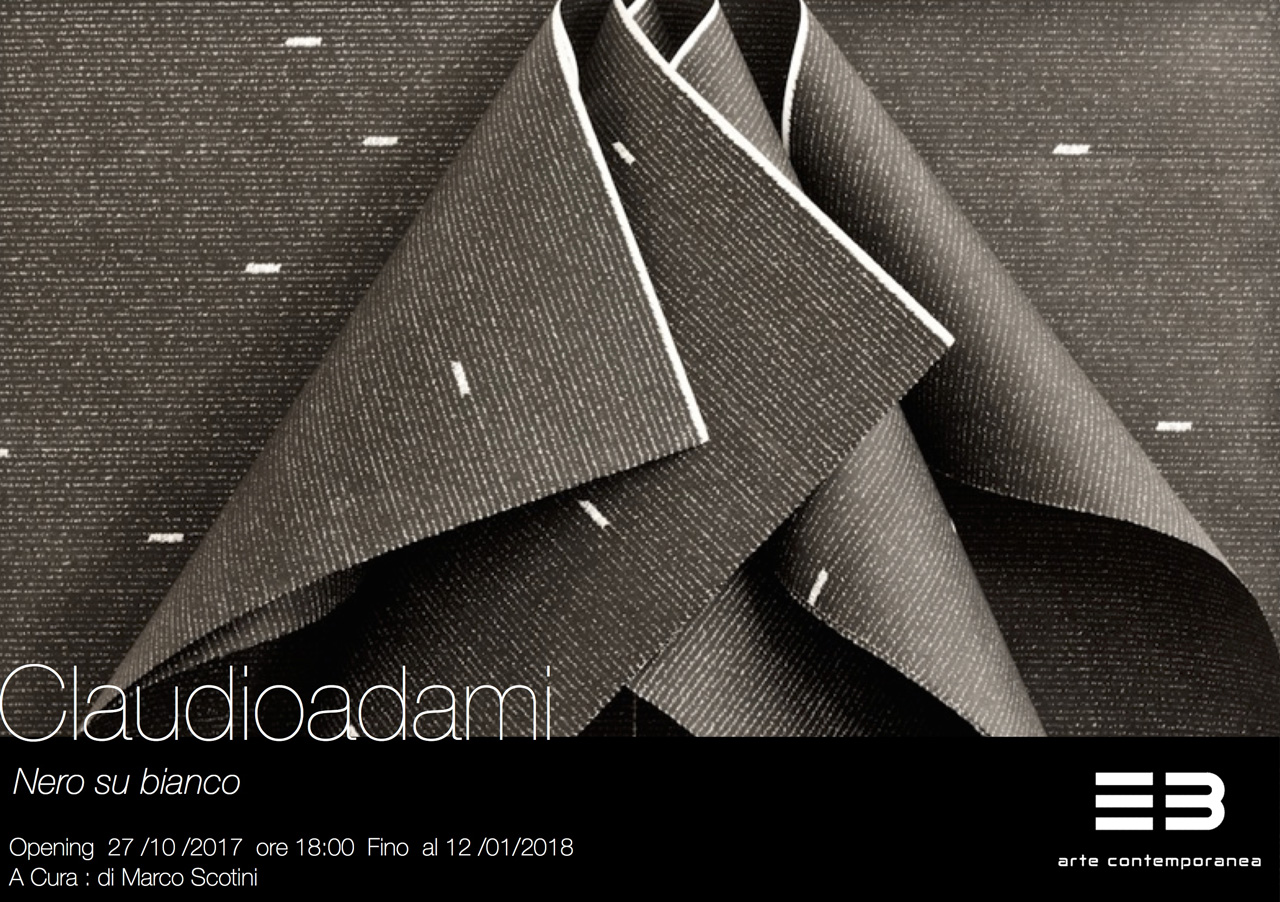CLAUDIOADAMI
NERO SU BIANCO
DAL 28 OTTOBRE AL 12 GENNAIO 2018
a cura di Marco Scotini
Claudioadami in the initial part of this meticulous process of criptografica painting copies texts from Samuel Beckett, the maximum module of non-sense. Tragic and empty, life reduced to the zero degree of man’s existance as an individual. However, the artist in order to neutralize this feeling of existential anxiety went a bit further: he cancelled Beckett as well, looking for a defence and a point of reference in painting/writing that is reduced to pure self testimony. Following this idea, his work becomes more and more automatic; he concentrates on a correct process, on its concrete problems, on a precise execution, ordered, without smudges, that then becomes a therapeutic practice (perhaps resembling certain Zen repetitive rituals). His paintings are pages of a “Diary” united. They are pure “quantity” of a meticulous time-consuming kind of work, sometimes longer or shorter, marked by the registration of dates. These are minimal but essential links between internal painting time and external “objective” time, imposed by society. Perhaps the only way to continue making paintings that make sense is simply just to do them, to exist day by day in exactly the same way, not thinking about problems of the past and not immagining the future.
Marco Scotini
The title “Black on White” alludes to the first markings on paper, the foundation of writing, going back to Chinese markings on paper, back to the material origin of the text, and to the pleasure and privilege of having language “being written down”. This is an ancestral privilege that was not accorded to either voice or to memory, but only to writing, and this because “law” was always entrusted to a text: such as The Ten Commandments, The Torah, or in particular, The Quran. But “Black on White” alludes to the exasperating attempts to encircle any possible speech in the fragile thickness of calligraphic markings, that of a thin black line in ink drawn on the surface of a sheet of paper. So when does a mark cease to be a linear profile, or a simple visual marking and become a word? And again: how do you reabsorb all the sentances into one single word, all the books into one page or a whole world into one book? It is because of this that Claudio Adami’s uninterrupted exercise of filling page after page with markings (like tangled lashes) reminds us of a mantra, a trance-like state, maximum concentration that makes no concessions to external stimuli.
Francesco Poli



